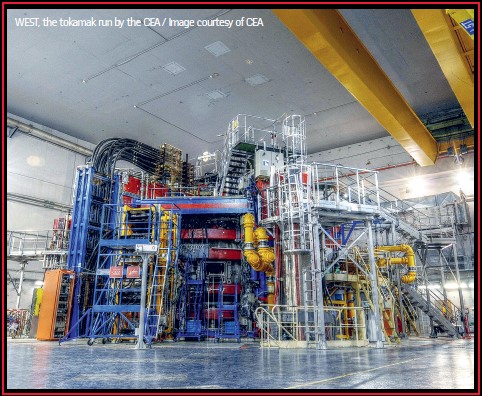
The beginning of 2025 has delivered a significant achievement in nuclear fusion research giving us hope that after couple decades of intensive work and delays in this international project we are witnessing some promising results. Fusion uses fewer resources and less fuel than fission and does not produce long-lived radioactive waste.
On 12 February 2025 a nuclear fusion machine in southern France, known as the ” WEST” machine at the Alternative Energies and Atomic Energy Commission’s (CEA) Cadarache site, set a new record for plasma duration by maintaining plasma for more than 22 minutes (1,337 seconds). This broke the previous record of 1,066 seconds set by China’s “EAST” machine in January 2025.
During this process, the plasma reached a temperature of 50 million °C. This milestone was achieved by maintaining hydrogen plasma for over twenty minutes through the injection of 2 MW of heating power.
This success positions both WEST and the French community to lead the way for the future use of ITER, the International Thermonuclear Experimental Reactor.
The West and East tokamaks are contributing to the €20bn ITER nuclear fusion project at Cadarache, which is the largest global fusion experiment. The increase in plasma duration is significant as it demonstrates growing maturity in the knowledge of plasmas and their control, and it is essential to ensure that all plasma-facing components can withstand extreme conditions without malfunctioning or polluting the plasma.
Tokamaks are devices that use powerful magnets to create a magnetic field capable of confining plasma. They heat deuterium and tritium within the magnetic field to plasma temperatures, which can be over six times hotter than the core of the Sun.
There are several tokamak facilities around the world, with countries like the US, Germany, UK, China, South Korea, and Japan leading the race to unlock the potential of nuclear fusion.
Experimental fusion reactors, such as EAST and WEST, are constantly refining what the ITER fusion plant will be like when it begins operation.
Nuclear fusion is a technology with the ultimate goal of controlling naturally unstable plasma. In the coming month, the WEST team is aiming to achieve even longer plasma durations – “up to several hours combined” – as well as higher temperatures, according to the CEA.







